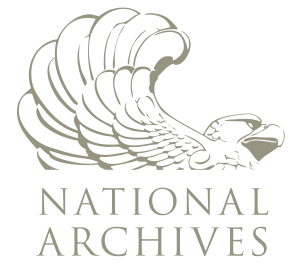US National Archives enshrines Wikipedia in Open Government Plan, plans to upload all holdings to Commons


The US National Archives and Record Administration (NARA) has committed to engaging with Wikimedia projects in their newest Open Government Plan. The biannual effort is a roadmap for how the agency will accomplish its goals in the digital age. In the first plan, issued in 2010, Archivist of the United States David Ferriero wrote "the cornerstone of the work that we do every day is the belief that citizens have the right to see, examine, and learn from the records that document the actions of their Government. But in this digital age, we have the opportunity to work and communicate more efficiently, effectively, and in completely new ways."
These "new ways" included reaching out to Wikipedia, starting in 2011 with the hiring of Dominic McDevitt-Parks as a Wikipedian in residence. The position began as a student internship, but McDevitt-Parks has since moved to being a digital content specialist with a specialty in the Wikimedia sites. Ferriero has spoken at multiple Wikimedia events, including the Wikipedia in Higher Education summit in 2011 (see Signpost coverage) and Wikimania 2012 (video; transcript; Signpost coverage). He has been frequently quoted saying varying forms of "if Wikipedia is good enough for the Archivist of the United States, maybe it should be good enough for you."
How has the Wikimedia movement benefited from NARA and McDevitt-Parks' placement? There are three organized projects dedicated to NARA. On Wikisource, NARA has an ongoing initiative that is transcribing US government documents. On Commons, NARA has uploaded over 100,000 images, the most recent of which came a month ago. The English Wikipedia has gone into action with several articles related to images from NARA, such as Desegregation in the United States Marine Corps. The site has benefited with several images uploaded for specific users, such as living Medal of Honor recipients, like Charles H. Coolidge, and the lead images for three US battleship articles: Pennsylvania-class battleship, USS Arizona (BB-39), and South Carolina-class battleship (Editor's note: the author of this article has made significant contributions to the last three pages).
All of that is in the past, though. The Open Government Plan lays out what NARA wants to accomplish in the next two years; but as a general plan it suffers from a lack of specifics. The Signpost contacted McDevitt-Parks to learn what the inclusion of Wikipedia in this plan will mean for the site.
He told us that there is no quantitative target for a total number of image uploads, because NARA plans to upload all of its holdings to Commons. "The records we have uploaded so far contain some of the most high-value holdings (e.g. Ansel Adams, Mathew Brady, war posters)", he said. "However, we are not limiting ourselves to particular collections. Our approach has always been simply to upload as much as possible ... to make them as widely accessible to the public as possible."
To accomplish this, volunteers are working with NARA on a new upload script to port images to Commons; the work in progress is posted on Github. At NARA itself, an API is in development that will make it easier to extract the metadata of the images. Given these efforts, McDevitt-Parks says that they will "allow us to more easily upload all of our existing digitized holdings to Wikimedia Commons and similar third-party platforms, and also that in the future upload to platforms like Commons will be the end of all digitization. Looking at it this way, I would say that in a way all of our digitization efforts are also for upload to Wikimedia Commons."
In the meantime, the special requests process—the first pilot launched by NARA when McDevitt-Parks began his tenure—is still available for Wikipedia editors. In the future, they hope that this ad hoc arrangement can be supplemented with a volunteer citizen scanning program that will be able to "generate greater Wikipedian-initiated digitization."
